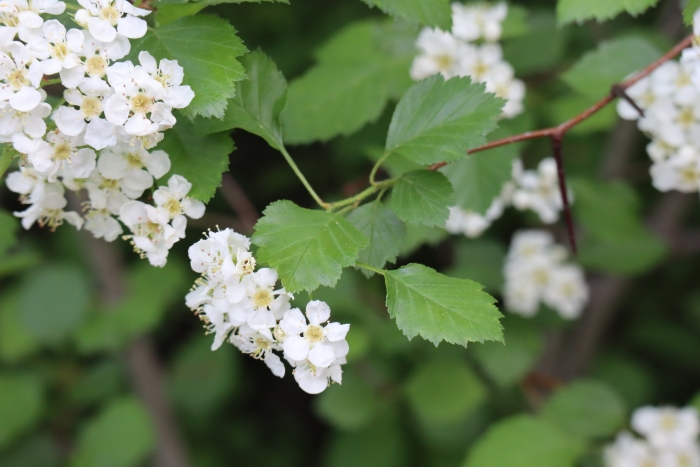Scarlet Hawthorn
(Crataegus coccinea)
Scarlet Hawthorn (Crataegus coccinea)
/
/

© Henry "Nick" Robertson
CC BY-SA 4.0
Image By:
© Henry "Nick" Robertson
Recorded By:
Copyright:
CC BY-SA 4.0
Copyright Notice:
Photo by: © Henry "Nick" Robertson | License Type: CC BY-SA 4.0 | License URL: http://creativecommons.org/licenses/by-sa/4.0/ | Uploader: henrythesick | Publisher: iNaturalist |

























Estimated Native Range
Summary
Crataegus coccinea, commonly known as Scarlet Hawthorn, is a deciduous tree or large shrub native to the deciduous forests of eastern North America, particularly in areas with moist, well-drained soils along forest edges and stream banks. It typically grows to a height of 20-30 feet (6-9 meters) with a similar spread, and it features a rounded crown with dense branching. The Scarlet Hawthorn is notable for its glossy, deep green leaves, which turn to shades of orange, red, or purple in the fall, adding seasonal interest to the landscape.
Scarlet Hawthorn is valued for its showy clusters of white flowers that bloom in late spring, followed by bright red fruit, or haws, which persist into winter and are a food source for wildlife. The tree’s thorny branches make it an effective barrier plant or hedge, and it is also used as a specimen tree in urban and residential settings. It prefers full sun to part shade and adapts to a variety of soil conditions, though it thrives in moist, well-drained loamy soils. While generally low-maintenance, it can be susceptible to rust diseases and fire blight. Gardeners should be aware of its potential to self-seed and spread if not managed.CC BY-SA 4.0
Scarlet Hawthorn is valued for its showy clusters of white flowers that bloom in late spring, followed by bright red fruit, or haws, which persist into winter and are a food source for wildlife. The tree’s thorny branches make it an effective barrier plant or hedge, and it is also used as a specimen tree in urban and residential settings. It prefers full sun to part shade and adapts to a variety of soil conditions, though it thrives in moist, well-drained loamy soils. While generally low-maintenance, it can be susceptible to rust diseases and fire blight. Gardeners should be aware of its potential to self-seed and spread if not managed.CC BY-SA 4.0
Plant Description
- Plant Type: Tree, Shrub
- Height: 20-30 feet
- Width: 20-30 feet
- Growth Rate: Moderate
- Flower Color: White
- Flowering Season: Spring
- Leaf Retention: Deciduous
Growth Requirements
- Sun: Full Sun, Part Shade
- Water: Medium
- Drainage: Fast, Medium, Slow
Common Uses
Bird Garden, Butterfly Garden, Deer Resistant, Erosion Control, Fragrant, Low Maintenance, Showy Flowers
Natural Habitat
Deciduous forests of eastern North America, particularly in areas with moist, well-drained soils along forest edges and stream banks
Other Names
Common Names: Scarlet Hawthorn, Cockspur Hawthorn, Red Haw, Red-Fruit Hawthorn, Scharlach-Weißdorn, Red Hawthorn
Scientific Names: , Crataegus coccinea, Crataegus acclivis, Crataegus assurgens, Crataegus caesa, Crataegus coccinea subsp. eglandulosa, Crataegus coccinea var. cordata, Crataegus coccinea var. cornifolia, Crataegus coccinea var. cuneata, Crataegus coccinea var. ellwangeriana
GBIF Accepted Name: